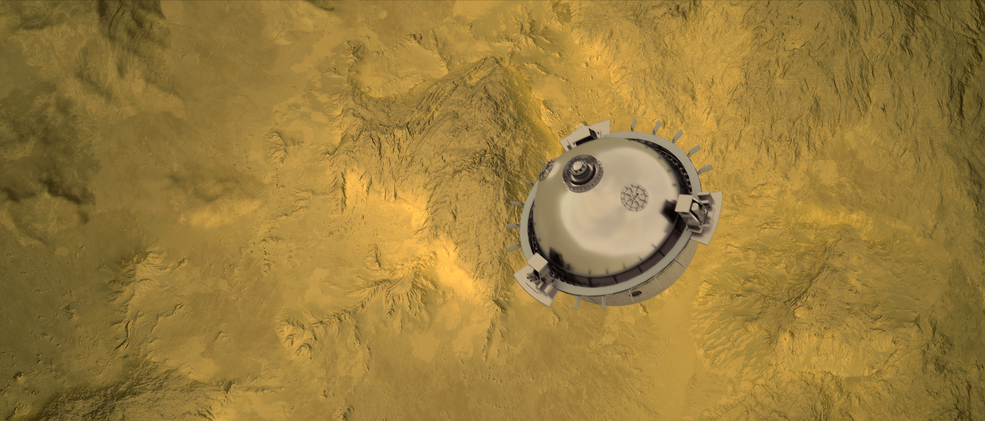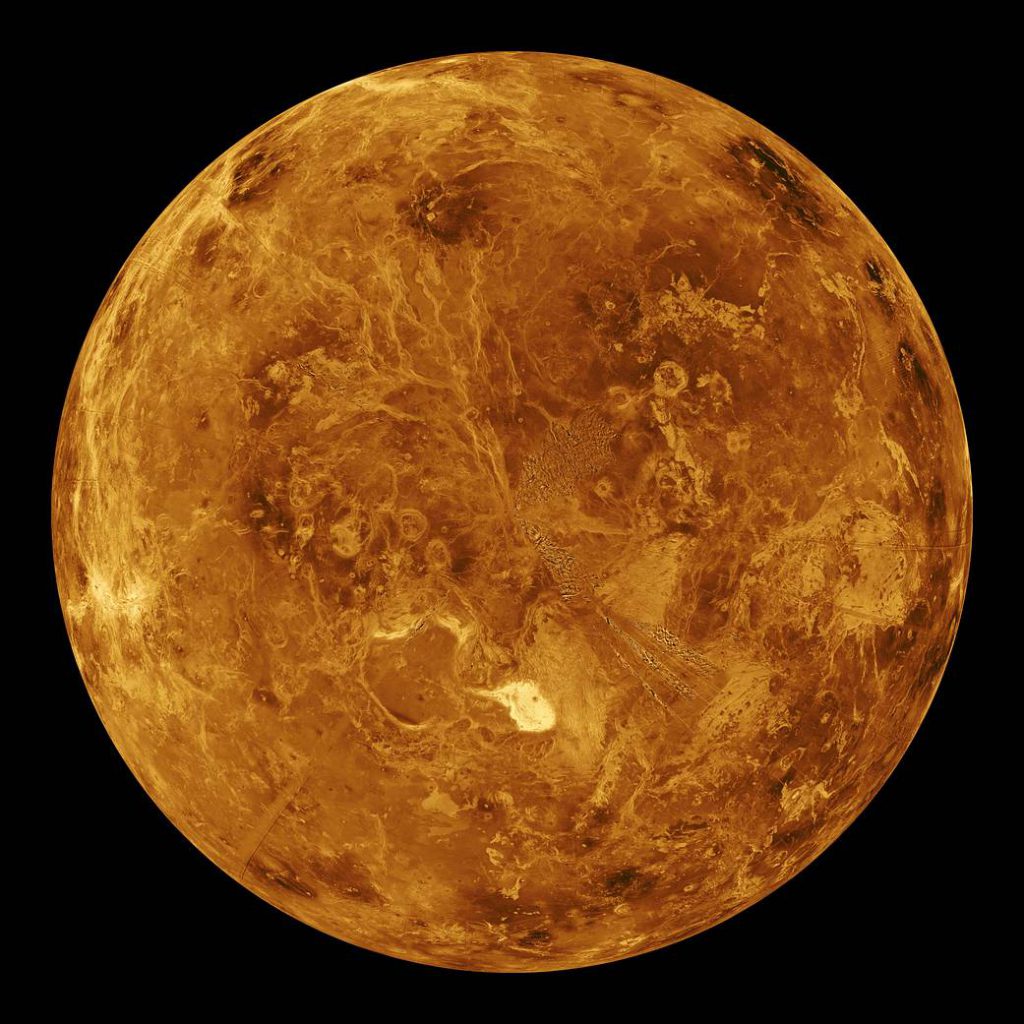Phototrophy on Venus?
By Sarah Treadwell – BMSIS Science Writer
The astrobiology world was buzzing last year when a study was released stating levels of phosphine had been detected in the cloud decks of Venus. While this study was subjected to the full scrutiny of the scientific method since published, it opened a flood gate of interest in taking a closer look at the potential for life on Earth’s deadly twin planet. NASA selected Davinci+ (Deep Atmosphere Venus Investigation of Noble gases, Chemistry, and Imaging), launching in 2029 to sample the clouds, as well as VERITAS (Venus Emissivity, Radio Science, InSAR, Topography, and Spectroscopy) which will map the geological history of the planet. Now, even more promise and reason for going to Venus comes from a study just released, suggesting that conditions may be favorable for photosynthesis to be occurring in a certain habitable zone in the cloud decks of Venus.

Credits: NASA GSFC visualization by CI Labs Michael Lentz and others.
The paper titled, “Potential for Phototrophy in Venus’ Clouds,” was led by Blue Marble Institute Research scientist Rakesh Mogul. Mogul also serves as a professor of Biological Chemistry at Cal Poly Pomona. The paper presents arguments for conditions on Venus that could allow potential microbes to be able to harness light for metabolic purposes. The research team also suggests that due to conditions that would partially neutralize Venus’s otherwise highly acidic atmosphere, the acidity and water values may be ideal for microbial growth.
Microbes and microbial growth in the atmosphere are normal here on Earth. In fact, there is a large amount of airborne microorganisms floating above our heads, and they may play an interconnected role in cloud formation and precipitation. A study sampling bacteria in hurricanes found that the hurricanes helped facilitate large amounts of new cells in bacteria communities which varied dramatically between the hurricanes. While more studies are needed, this implies that the microbiome is a dynamic and underappreciated aspect of the upper troposphere on Earth.
Venus, however, is nothing like Earth and historically has never been a prime suspect of a planet to harbor life. Venus’ bright presence in the night sky is due to its thick, yellow, toxic atmosphere. It’s clouds contain sulfuric acid which traps heat and causes a runaway greenhouse environment. Because of this, it is the hottest planet in the solar system, even though Mercury is closer to the sun. At its surface, the air pressure is a crushing 90x more dense than on Earth and it is so hot there that lead can melt. The longest any spacecraft has survived on the surface was about 2 hours, which was Soviet Union’s Venera 13 probe in 1981. It makes sense that it’s largely been overlooked in the search for life. But as this paper suggests, there could be a sweet spot in the clouds quite favorable for microbial growth.

Mogul and his research team, Sanjay S. Limaye (University of Wisconsin, Madison), Yeon Joo Lee (Technische Universitat Berlin, Berlin, Germany) and Michael J. Pasillas (Cal Poly Pomona) report that photosynthesis could be occurring both day and night due to thermal energy radiating from the planet. They also state that the thick, toxic atmosphere may have a benefit for life. Through scattering and absorption, much of the harmful UV rays from the sun is removed, which is essential in protecting life from cellular damage. They also believe there could be lower abundances of sulfuric acid in the middle cloud decks, where conditions could possibly harbor water activity.
As with the possible detection of phosphine on Venus, this paper suggests what some researchers have been pushing for years… It is time for us to return to Venus. Venus is proving that it is possible we may find life in the most extreme places. There are so many future missions planned to search for potentially habitable conditions for life and Venus now unexpectedly joins the list. Astrobiology continues to be an exciting field, one that requires every discipline of science to come together and continue to work on finding the answer humans have asked for eons. Are we alone in the universe?
To learn more about Venus and the history of research there, check out https://solarsystem.nasa.gov/planets/venus/overview/
Sarah Treadwell is a science communicator and a science writer for Blue Marble Space Institute of Science. There she also helps produce the show “Ask an Astrobiologist” with NASA and SAGANet. She is the host of a weekly talk show called Cosmic Waves with Space Case Sarah on IRoc Space Radio. She also serves as a NASA/JPL volunteer Solar System Ambassador.
